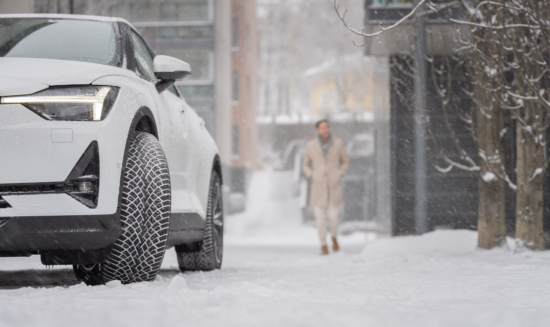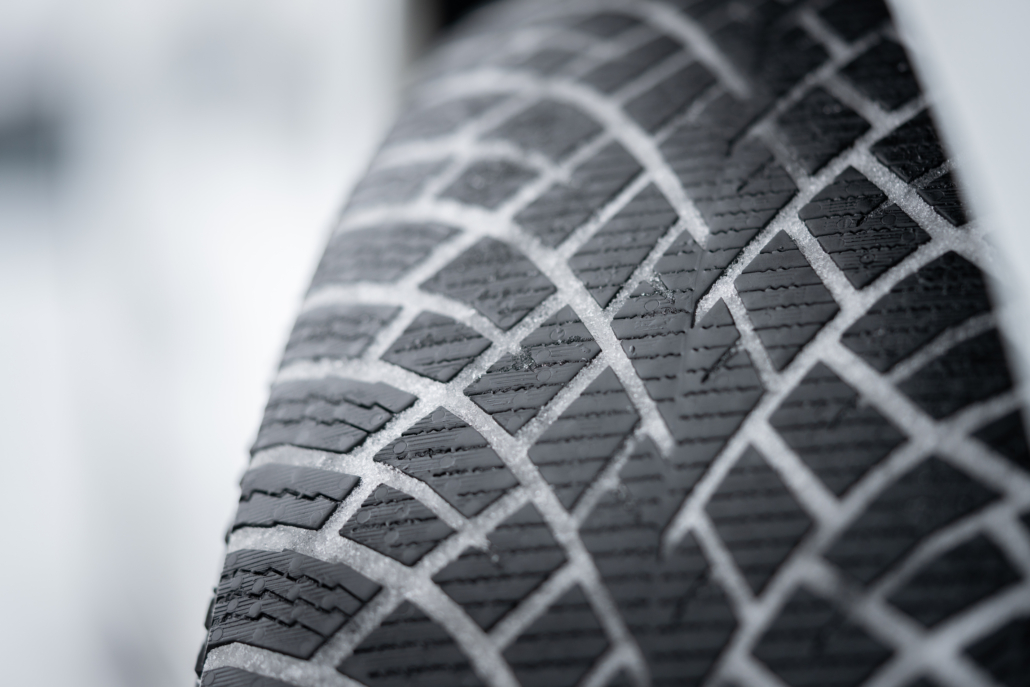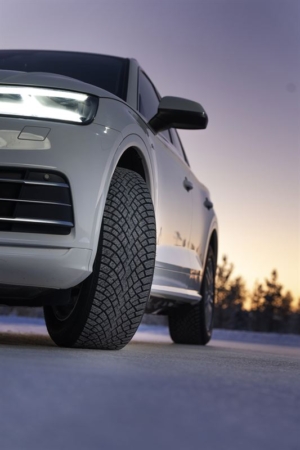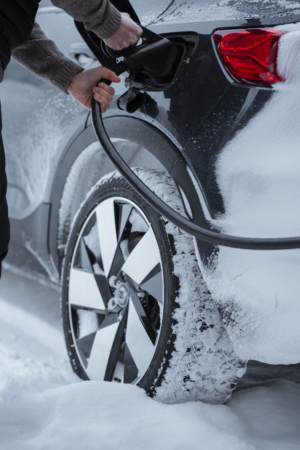Nokian’s new winter tyre includes SUV, EV variations
 Nokian Hakkapeliitta R5
Nokian Hakkapeliitta R5
The new Nokian Tyres Hakkapeliitta R5 for passenger cars and the Hakkapeliitta R5 SUV for sport utility vehicles and crossovers are made to deliver uncompromising safety and smart driving features for every day of winter. Offering the purest form of safety, the new Hakkapeliitta R5 product range is an innovative combination of winter grip, silence and driving comfort. A special addition to this product family is the Hakkapeliitta R5 EV, a dedicated version for electric vehicles and hybrids.
Nokian says that he new Hakkapeliitta R5 offers unprecedented ice grip, comfort and green driving features specially designed for the Northern winter. The excellent winter safety properties of the new products are a direct result of a new tread design, innovations like new grip particles, and rigorous testing and relentless research.
The new Hakkapeliitta R5 product range comprises comprehensive selection of over 160 products. Covering sizes from 14 to 22 inches, the Hakkapeliitta R5 is offered in speed categories Q (160km/h), R (170 km/h) and T (190 km/h). Most of the products are marked XL for the highest possible load capacity in that size. The selection will be available to consumers in autumn 2022. The main markets are in the Nordic countries, Russia and North America.
One of the major safety leaps has been achieved by renewing the tread pattern. The new Double Block Grip design offers superior grip and handling, and it can be seen especially on the shoulder areas of the tyre. The stiff row of tread blocks starts from the centre and is split in two moving towards the shoulder area. Compared to its predecessor, the Nokian Tyres Hakkapeliitta R3, the new Hakkapeliitta R5 has 40 per cent more tread blocks on the shoulder and intermediate area. This increase means that the contact area has 4 per cent more rubber touching the surface, which results in better grip on slippery surfaces.
The best-in-class ice performance is guaranteed by the unique Arctic Grip Crystals. The microscopic crystals are mixed in the tread compound and work like built-in studs, creating sharp, tough grip edges inside the rubber. As the tyre wears down, the crystals emerge and activate a well-needed grip reserve.
The uncompromising development work can be clearly felt in the overall winter performance. Compared to the Hakkapeliitta R3, the performance on ice and snow has increased by up to 4 per cent. For example, the braking distance on ice is up to 5.6 metres shorter compared to the predecessor when braking from 0-80 km/h. The new Hakkapeliitta R5 also comes with a 10 per cent increase in siping. The dense, computer-optimized sipes work optimally on ice, snow and bare roads. These deep-cut sipes ensure that grip remains safe even when the tyre wears down. The self-locking 3D sipes press the tread blocks together on road contact, which improves handling during turns and evasions.
Pure comfort
Tyre noise can affect driving comfort significantly. Lower noise levels can make the journey more comfortable and less exhausting for the driver. The improved comfort features of the Hakkapeliitta R5 have been achieved by eliminating the most disturbing noise peaks the human ear can distinguish from inside the vehicle. This selective elimination results in less interior noise and added driving comfort.
The new Silent Touch tread design offers comfortable and pleasant rolling thanks to the new tread block distribution. While the number of blocks has been increased, the individual blocks and grooves are smaller. Combined with the balanced tread blocks, the Silent Touch design offers stable handling, smooth driving and pleasant sound levels.
Eco-friendliness
Lighter rolling resistancesaves fuel and extends the range of electric vehicles. Due to the lightly rolling tread design and the new Green Trace compound, the Hakkapeliitta R5 has up to 4.4 per cent lower rolling resistance than its predecessor and up to 15.5 per cent better rolling resistance compared to the premium industry average of the main competitors. Also, with electric vehicles, the increase in driving range can be quite significant. Compared to its premium peer group, the Hakkapeliitta R5 offers a 4.0 per cent longer range. This can mean up to 230 km more range for one winter.
“When designing new tyres, the entire production process and the life cycle of the product must take the environmental factors into account. Starting from the material selection, the new Hakkapeliitta R5 has been designed to leave a smaller carbon footprint. The new, eco-friendly Green Trace compound offers safe and green driving due to ingredients like natural rubber, recycled steel, plant derived oils and pine resin. We’re proud to say that one third of the new compound consists of renewable and recycled materials. The new Hakkapeliitta R5 is durable, sustainable, and wear resistant, while being the most energy efficient winter tyre in the entire world”, says Katriina Markkula, Nokian Tyres’ development manager.
Energy efficiency – in numbers
The use of winter tyres with low rolling resistance contributes to decreasing energy consumption. Compared to similar premium winter tyres, cars using the Hakkapeliitta R5 consume 2.8 per cent less fuel. In Finland, for example, a driver can save on average up to 48 litres of fuel, which decreases CO2 emissions by approximately 140 kg in four years, which is the estimated lifecycle of a winter tyre. Indicative calculations show that electric cars using the Hakkapeliitta R5 can save 170 kWh of electricity during the estimated tyre lifecycle of four years.
There are other positive environmental benefits too, says Nokian. Tyres with low rolling resistance also have a positive impact on society. If for example all passenger cars using premium tyres in Finland, Sweden and Norway used Hakkapeliitta R5 tyre over the product’s lifecycle, the estimated fuel savings are 340 million litres, equalling the capacity of some 10 000 tankers, and carbon dioxide emissions would decrease by an estimated 900 000 tons. Benefits to society from this carbon dioxide reduction are estimated at 54 million euros, based on the social cost of carbon.






Comments